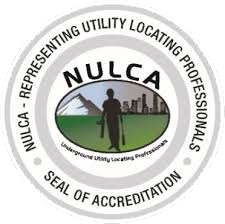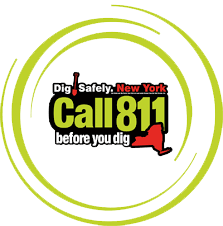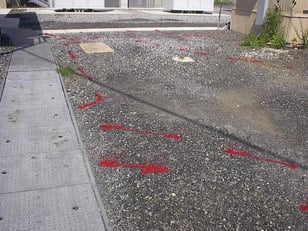
1. One Call (811) will mark out all my utilities.
One Call usually marks only the public portions of the underground utilities. Sometimes they mark electrical power, telecommunication, and natural gas lines from the street to your buildings, but usually not water, sanitary sewer and storm drain utilities.
2. Private utility locators will mark out all my utilities.
Although private utility locators will try to meet your needs completely to mark all relevant utilities, the locating technologies including ground penetrating radar(GPR) have limitations and usually there are no grantees that all utilities are located. You still need to proceed with caution for your ground-intrusive work.
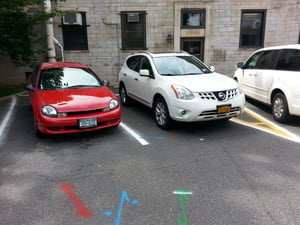 3. I just ordered an utility mark out service, now I can sit back and relax until they come.
3. I just ordered an utility mark out service, now I can sit back and relax until they come.
If your site is complex which is common for industrial and commercial sites, there is something you should do before the utility locators come. Besides making sure that in the target survey area there should be minimal obstructions such as parked cars, piled construction materials, etc, check to see whether there are accesses to the areas around the target survey area. Sometimes there are locked utility rooms or fenced utility setups which might be crucial for utility locating; and it might not be easy to access them unless it's prearranged. Also, try to see whether you can get any utility records/maps, they don't have to be accurate. They could provide important clues which could make a difference between locating and missing some utilities.
4. Utility mark out is accurate.
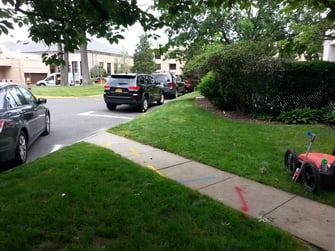
A mark out can just be based on records without actual locating which may not may not be accurate. Even with locating technologies used, it could still be inaccurate or incomplete. Despite the high accuracy of locating technologies including ground penetrating radar and line tracing, they all have limitations and the instruments readings are subject to operators' interpretation.
If you are doing a drilling project, try to keep away from marked lines as far as possible. In New Jersey, it's required that it should be at least two feet away from both sides of the marked line. When possible, it's better if you can keep your drilling location 3, 5, or even 10 feet away from the marked line. If you are doing excavation, keep in mind that there are high possibilities that there could be parallel utilities next to a marked line. One marked line could indicate a single pipe/cable or a group of parallel pipes/cables close to each other.
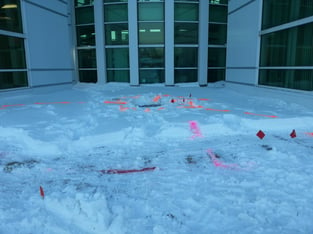
5. In my proposed drilling or excavation area, there are no utilities shown in my utility map, so I don't need to do underground utility locating.
Past records are seldom accurate or complete. In our experiences, previous unknown underground utilities are often detected during underground utility locating. It's actually rare to only find utilities shown on existing utility maps.
6. Only metallic pipes/cables, but not non-metallic utilities including PVC pipes, fiber optic cables and concrete pipes can be detected.
GPR is not an all-seeing tool, but could be used to find locations of these non- metallic utilities in some favorable subsurface conditions. Also, if you have access, you can insert a metallic trace wire into the hollow pipe or conduit so you can trace it with a cable/pipe locator system.
7. Ground penetrating radars can see all underground utilities.
A GPR can not see utilities by itself, it's just an extension of human senses and this extension still has its limitations. Two of its main limitations are limited penetration depth and data interpretation difficulties in some subsurface conditions.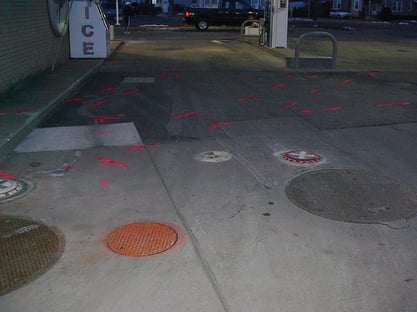
8. Once an utility mark out is done, I can use its results for all my future ground-intrusive projects. I don't need to do it again.
Underground utility locating is a dynamic process, there are a lot of variable factors involved affecting its outcome. For example, the soil condition varies with seasons and weather and it could significantly affect the GPR performance. Also, utility locators may or may not have the full access to the site due to obstructions during the survey time. Other factors include accesses to nearby utility rooms, availability of utility records, and even clues from conversations with personals familiar with the site. In addition, an utility mark out usually serves a particular purpose and the mark out may not be suitable for other purposes. For example, a mark out for clearing a 2-feet depth trenching route may not be suitable for deeper excavation or soil boring activities. In essence, if the circumstance such as the utility survey condition and the scope of ground-intrusive work changes, or if there is new incoming information about underground utilities, it might be worth it to do the utility mark out again.






